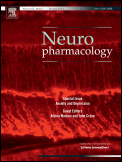
“The endocannabinoid system serves many physiological roles, including in the regulation of energy balance, food reward, and voluntary locomotion.
Signaling at the cannabinoid type 1 receptor has been specifically implicated in motivation for rodent voluntary exercise on wheels.
We studied four replicate lines of high runner (HR) mice that have been selectively bred for 81 generations based on average number of wheel revolutions on days five and six of a six-day period of wheel access.
Our results suggest that voluntary exercise alters circulating levels of endocannabinoids, and further demonstrate that selective breeding for voluntary exercise is associated with evolutionary changes in the endocannabinoid system.”
https://www.ncbi.nlm.nih.gov/pubmed/28017680








